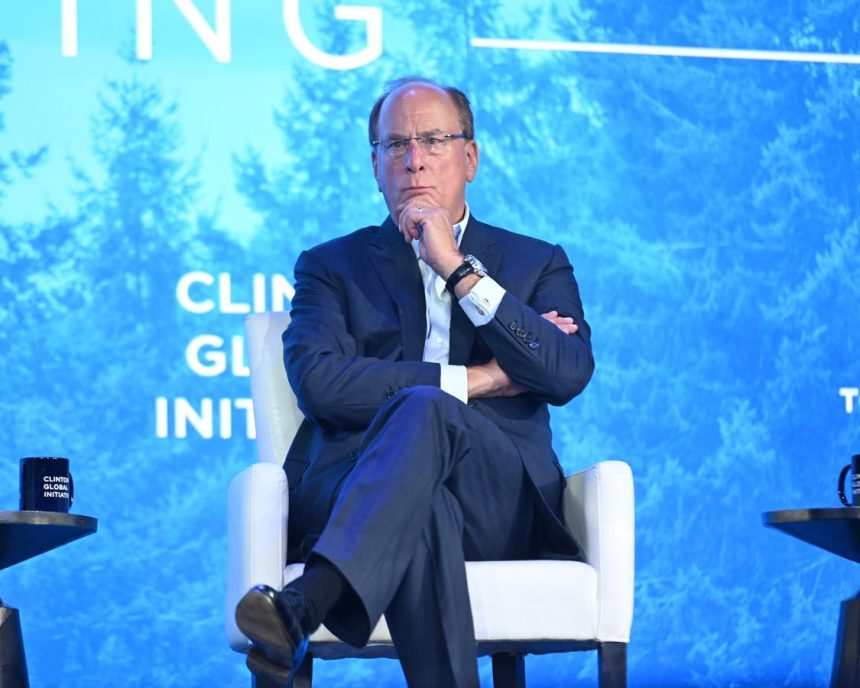As he has often done in the past, Blackrock Chair/CEO Larry Fink offers a provocative new iteration of stakeholder capitalism in his annual letter to investors. This time, it’s about rethinking the retirement age.
In a subtle shift away from his multi-year focus on environmental, social and governance (ESG) themes, Fink seeks to draw broad-based attention to what he perceives as a looming retirement savings crisis within the workforce.
“As a society, we focus a tremendous amount of energy on helping people live longer lives. But not even a fraction of that effort is spent helping people afford those extra years,” Fink writes in the 2024 edition of his letter.
More specifically, Fink perceives the retirement savings issue as one of the mid-21st Century’s biggest economic challenges (the other being infrastructure). He views the issue as more difficult than it was 30 years ago, and will be increasingly more difficult over the next 30 years, as people are living longer lives and will need more money. The latter, Fink believes, can be provided by the capital markets, “so long as governments and companies help people invest.”
To address this challenge, Fink proposes “an organized, high level” national conversation to help ensure that future generations are able to live out their senior years in a dignified manner. This conversation would examine the retirement crisis through three different perspectives:
- That of a current worker, trying to save for retirement;
- Someone who has already retired and has savings, but is worried that the funds may run out;
- And the broader demographic issue.
More people are retiring in America and those retirements are increasing in length. That, in turn, is placing the U.S. retirement system under “immense strain.”
As a possible solution, Fink urges rethinking the conception of retirement, with a particular focus on revisiting the average retirement age.
“How do we encourage more people who wish to work longer, with carrots rather than sticks? What if the government and the private sector treated 60-plus year-olds as late-career workers with much to offer rather than people who should retire?”
He points to countries such as Japan, the Netherlands and India that have developed creative responses to this question.
This isn’t the first time Fink has raised retirement as proper focus of corporate social responsibility efforts. In his 2019 letter, he cited the shift to defined contribution plans as changing the traditional role in which companies helped their workers navigate their retirement. This change, he reasoned, left too many workers unprepared for retirement. This, in turn, has led to increased anxiety in the workforce, reduced productivity and — surprise — the rise of populism in the political environment.
In that 2019 letter, Fink called on companies to assume a greater role in helping workers confront retirement. His view was that lending corporate expertise and capacity for innovation could lead to a more stable workforce and an economically secure population in communities in which those companies operate. His 2024 letter sharpens that perspective, in a manner consistent with the broader theme of corporate social responsibility; i.e., that companies that fulfill their purposes and duties to their stakeholders achieve greater rewards over the long term.
To be sure, many of Fink’s proposals over the last five to seven years have not met with universal acceptance. There is an increasing backlash, particularly from some state governments and pockets of the investor community, against ESG investing. Indeed, Fink himself has abandoned public reference to the concept, to focus more on issues of climate change and sustainability.
Yet the reference to a “retirement crisis” may find a more receptive home in the boardroom, as many corporate leaders may associate themselves with Fink’s tale about his parents’ retirement needs. Themes such as “affording older age” and “building retirement savings” for workers may (fairly or unfairly) more readily resonate with corporate leaders than those of sustainability and social engineering.
The types of changes Fink is advocating to the current system of worker retirement are both bold and sweeping. They would likely require a radical change in the relationship of the company to its workforce. And their implementation would need to navigate a complex regime of federal laws and regulations designed to protect worker retirement security.
But suggesting a national conversation on this issue isn’t an expensive ask of corporate leadership. Indeed, it’s a conversation that might favorably begin within the boardroom, from which strategic thinking often best arises. It’s also a conversation that should include executive leadership, and internal and external retirement plan and strategic and financial advisors.
This wouldn’t be a rerun of well-worn ESG conversations. Rather, in the current environment of growing workforce culture challenges and unrest, and political populism, it would be a preview of an attractive coming attraction-a more sustainable approach to secure worker retirement. And that might actually be a “four-stars” approach for the board to pursue.
Read the full article here




